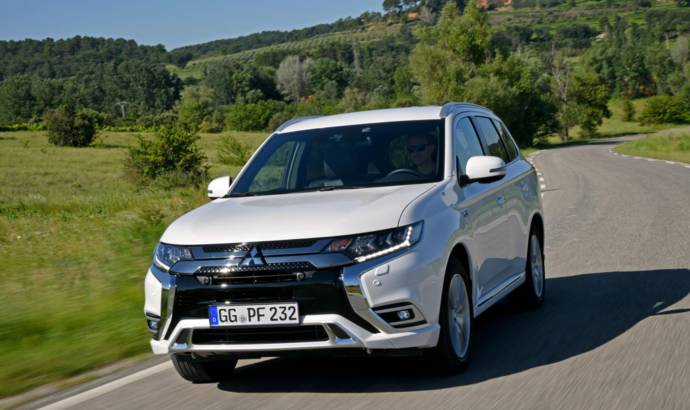Mitsubishi hit the jackpot with its hybrid version of the Outlander, selling the car in great numbers across Europe. To maintain this momentum, Mitsubishi is updating the current Outlander PHEV with a 2019 version.
The changes made for the 2019 Outlander PHEV are predominantly technical. The powertrain received the most extensive engineering focus with the development of a new 2.4-litre petrol engine, which uses its MIVEC variable-valve timing system to seamlessly switch between Otto and Atkinson combustion cycles depending on the driving situation. The larger capacity means the engine produces more power (135hp vs 121hp) and more torque across a wider rev range (211Nm vs 190Nm) when operating in the familiar Otto cycle mode, which is ideal for moderate-to-high load situations such as inclines and rapid acceleration. At the same time, the petrol engine also manages to be more efficient than before because it can switch to the Atkinson cycle.
The Mitsubishi Outlander PHEV’s electric powertrain has also received some improvements that include a 10% increase in the generator output and an increase in the rear electric motor output to 95hp. The drive battery has also had its output increased by 10% and its overall capacity increased to 13.8kWh thanks to new battery cells. From the driver’s perspective, one of the biggest changes is the increase to Outlander PHEV’s top speed in Electric Vehicle mode, up from approximately 78mph (125km/h) to 84mph (135km/h) where legally permitted.
The 0-62mph acceleration benchmark is dispatched in 10.5 seconds, some 0.5 seconds faster than before, while its overtaking acceleration is also improved by a similar margin (e.g. 50mph-62mph is reduced by 0.6 seconds to 3.7 seconds).
At the same time, the Outlander PHEV’s pure EV range is more than enough for the average daily UK commute: An impressive 28 miles according to the new, more stringent real-world WLTP tests. The WLTP average fuel economy figure for the new Mitsubishi Outlander PHEV is 141mpg and its WLTP CO2 emissions are just 46g/km.
The front and rear shock absorbers have been revised to improve its low-speed ride while retaining its high-speed and cornering composure and a new “Sport Mode” brings with it sharper throttle responsiveness and more grip via the Super All-Wheel Control system during high lateral-load cornering. The steering ratio has also been revised and the power steering ECU re-mapped to offer more responsiveness and feel, while the brake power has been improved with the introduction of larger front brake discs. There’s also a new SNOW mode to improve low-grip launching and cornering abilities on slippery surfaces, while the traction control system has been revised to improve hill-climbing performance by using sufficient rear motor torque without compromising stability.



